Description
The instruction for medical use
of PRENESSA® medicine
the Trade name
of Prenessa®
the International unlicensed
name Perindopril Lekarstvennaya a form
of the Tablet of 2 mg, 4 mg, 8 mg
Structure
One tablet contains
active agent – perindoprit an erbumin of 2 mg, 4 mg or 8 mg,
excipients: Calcii chloridum hexahydrate, lactoses monohydrate, krospovidon, cellulose microcrystalline, silicon dioxide colloidal anhydrous, magnesium stearate
the Description
of the Tablet of round shape of white or almost white color, slightly biconvex, with a facet (for a dosage of 2 mg).
Tablets of an oval form of white or almost white color, slightly biconvex, with risky on one party and a facet (for a dosage of 4 mg).
Tablets of round shape of white or almost white color, slightly biconvex, with risky on one party and a facet (for a dosage of 8 mg).
Pharmacotherapeutic group
the Drugs influencing renin-angiotenzinovuyu a system. Inhibitors enzyme angiotensin-prerashchayushchego (EAP). Perindopril
the ATX C09AA04 Code
perindoprit the Pharmacological Pharmacokinetics Later properties of intake quickly is soaked up, and the maximum concentration in blood plasma is reached within 1 hour. The bioavailability is from 65 to 70%.
About 20% of the accepted perindopril turn into a perindoprilat-active metabolite. Except an active metabolite, 5 more inactive metabolites of drug are identified. Elimination half-life (T1/2) of a perindopril makes 1 hour. The maximum concentration (Cmax) of the perindoprilat in blood plasma is reached within 3 – 4 hours.
The concomitant use of food slows down transformation of a perindopril in perindoprilat, and, therefore, the bioavailability decreases therefore perindoprit it is necessary to accept inside, once in day, before a breakfast.
The volume of distribution is about 0.2 l/kg for the untied perindoprilat. Linking with proteins insignificant (binding of the perindoprilat about angiotensin the turning enzymes makes less than 30%), but it depends on concentration.
Perindoprilat is brought with urine and T1/2 of untied fraction makes about 3 – 5 hours. Disintegration of the perindoprilat connected with APF leads to increase in effective T1/2 up to 25 h. At reusable administration of drug the stabilization of pharmacokinetic parameters is reached for 4 days. After reusable reception there was no accumulation of a perindopril.
At patients of advanced age and at patients with a heart or renal failure the removal of the perindoprilat decreases. At impaired renal function it is recommended to change a dose depending on expressiveness
of disturbance (level of clearance of creatinine).
Perindoprilat is brought from blood circulation by dialysis, its clearance is 70 ml/min.
In cirrhosis the kinetics of a perindopril changes, at the same time the hepatic clearance of an initial molecule decreases twice, nevertheless the number of the educated perindoprilat does not change and therefore in this disease the dose of drug can be not changed.
The pharmacodynamics
of Prenessa® is inhibitor the angiotensin of the turning enzyme (ATE). The turning enzyme – a kinase, is oxopeptidase which promotes transformation of angiotensin I into angiotensin II and destroys a vazodilatator bradykinin to an inactive gektapeptid. The inhibition of APF leads to decrease in formation of angiotensin II in plasma that is followed by increase in activity of renin in blood plasma (owing to inhibition of negative feedback) and decrease in secretion of Aldosteronum. As APF inactivates bradykinin, suppression of APF is followed by increase in activity as circulating and the fabric kallikrein-kinin system (at the same time the system of prostaglandins is activated). Perhaps, this
mechanism promotes effect of the APF inhibitor reducing arterial blood pressure and partially promotes emergence of some side effects (for example, cough).
Perindopril acts by means of the active metabolite of the perindoprilat.
Arterial hypertension
of Prenessa® is effective at any stage of arterial hypertension: easy, moderate, heavy, at decrease in systolic and diastolic arterial blood pressure (in situation lying and standing). Пренесса® reduces the general peripheric resistance of vessels that leads to a system lowering of arterial pressure. At the same time the peripheral blood stream accelerates, however the heart rate (HR) does not increase.
The renal blood stream increases, but glomerular filtration rate does not change. After reception of a single dose, the maximum antihypertensive action is reached in 4 – 6 hours and, at least, 24 hours proceed, the residual effect is 87-100% of the maximum effect. The lowering of arterial pressure occurs quickly. At patients with good response to treatment, normalization is reached within a month and remains without emergence of a tachyphylaxis. Interruption of treatment is not followed by a withdrawal.
Perindopril reduces a hypertrophy of a left ventricle.
Perindopril possesses vasodilating action, improves elasticity of large arteries and the Wednesday/gleam of small arteries reduces a ratio. Additional therapy with thiazide diuretics enhances effect. Combination of APF inhibitor and thiazide diuretics also leads to reduction of risk of development of a hypopotassemia against the background of intake of diuretics.
Heart failure
of Prenessa® reduces cardiac performance by reduction before – and afterloads.
At patients with heart failure of Prenessa® reduces filling pressure in the right and left ventricles, reduces the general peripheric resistance of vessels, increases the cardiac index and warm emission.
Patients with cerebrovascular diseases in the anamnesis
At patients with cerebrovascular diseases in the anamnesis (a stroke or tranzitorny ischemic episodes in the last 5 years) Prenessa® promotes reduction of risk of developing of a repeated stroke (both ischemic, and hemorrhagic nature) for 28%. It is also established that perindoprit, in general, reduces risk of development: the fatal or resulting in disability strokes, (for 33%), cardiovascular complications, such as death, not fatal myocardial infarction and not fatal stroke (for 26%), dementia connected with a stroke (for 34%), serious deteriorations in cognitive functions (for 45%), the main coronary events, including not fatal myocardial infarction and coronary heart disease mortality (for 26%).
These therapeutic advantages were observed both at patients with arterial hypertension, and at patients with normal arterial blood pressure, irrespective of age, sex, existence or absence of diabetes and type of a stroke. It is established that active therapy within 5 years allows to avoid development of one stroke on 23 patients and one considerable cardiovascular complication on 18 patients.
Patients with stable coronary heart disease:
At patients with symptoms of coronary heart disease without the clinical signs of heart failure receiving perindoprit in a dose 8 mg of 1 times a day, in addition to usual therapy (including inhibitors of thrombocytes, hypolipidemic drugs and beta-blockers), considerable absolute decrease in primary final point by 1.9% (decrease in relative risk of development by 20%, 95% of DI[9.4, 28.6] – r & lt, 0.001), at patients with a myocardial infarction and/or revascularization in the anamnesis, absolute decrease by 2.2%, (decrease in relative risk by 22.4% (95% of DI [12,0, 31,6] – r & lt, 0.001) in comparison with placebo was observed.
Indications
Arterial hypertension:
– treatment of arterial hypertension
Heart failure:
– treatment of symptomatic heart failure
Stable coronary heart disease:
– reduction of risk of cardiovascular complications at patients with a myocardial infarction in the anamnesis and/or revascularization.
Prevention of a repeated stroke (as a part of complex therapy with indapamidy) at patients with cerebrovascular diseases in the anamnesis of a stroke or the tranzitorny cerebral ischemic attack
the Route of administration and doses
of the Tablet Prenessa® should be accepted to food, 1 times a day, in the morning.
The dose is chosen individually for each patient, depending on a condition of the patient and level of arterial blood pressure.
Arterial hypertension
of Prenessu® it is possible to apply in monotherapy or in a combination with other antihypertensive drugs.
The recommended initial dose makes 4 mg a day, in the morning.
At patients from the system activated renin-angiotensin-aldosteronovoy (in particular, with a renovascular hypertension, with umensheniye of volume of intercellular liquid and/or salt, with heart failure or heavy hypertensia) can test an excessive lowering of arterial pressure after the first dose. For such patients the recommended initial dose of Prenessy® makes 2 mg and the initiation of treatment should be carried out under observation of the doctor.
In 1 month of treatment the dose can be increased up to 8 mg a day.
In an initiation of treatment of Prenessoy®, especially at patients, the receiving diuretics, symptomatic arterial hypotension can develop therefore such patients as at them can be observed reduction of volume of intercellular liquid and/or salt should appoint drug with care, whenever possible it is necessary to cancel intake of diuretics in 2-3 days prior to therapy perindoprily.
Patients with hypertensia who cannot cancel therapy by diuretics treatment perindoprily should begin 2 mg with a dose. It is necessary to control function of kidneys and level of potassium in blood plasma. The subsequent doses of a perindopril should be adjusted depending on response of arterial blood pressure of the patient. If necessary, therapy by diuretics can be resumed.
Treatment of elderly patients it is necessary to begin with a dose 2 mg which can be gradually increased up to 4 mg, and if necessary, on the expiration of month up to 8 mg depending on function of kidneys (see the table below).
Symptomatic heart failure
Perindopril combined with nekaliysberegayushchy diuretics and/or digoxin and/or a beta-blocker is recommended to apply under careful medical observation with the recommended initial dose 2 mg accepted in the mornings. At good tolerance the dose can be increased by 2 mg with an interval not less than 2 weeks up to 4 mg once a day.
Dose adjustment has to be based on clinical reaction of each patient. At a severe form of heart failure and at patients with the increased risk (patients with impaired renal function and a tendency to electrolytic disturbances, patients, receiving simultaneous treatment by diuretics and/or vazodilatiruyushchy drugs), treatment should be begun under careful control.
To patients with the increased risk of developing symptomatic hypotension, (to patients with deficiency of salt, with a hyponatremia or without, to patients with a hypovolemia or to the patients receiving vigorous therapy by diuretics), prior to treatment perindoprily it is necessary to correct these conditions, whenever possible, prior to treatment perindoprily. Both to, and during treatment perindoprily, it is necessary to control carefully the level of arterial blood pressure, function of kidneys and level of potassium in blood plasma.
Stable coronary heart disease:
Perindopril it is necessary to appoint in a dose 4 mg within
two weeks once a day, then to increase up to 8 mg once in day, depending on function of kidneys and provided that the dose of 4 mg is well transferred by the patient.
Patients of advanced age drug should appoint in a dose 2 mg within the first week once a day, then 4 mg once in day next week before increase in a dose up to 8 mg once a day, depending on function of kidneys (see the table below). The dose should be increased only at good tolerance of the previous lower doses of drug.
Prevention of a repeated stroke
the Initial dose of a perindopril at patients with cerebrovascular diseases in the anamnesis makes 2 mg a day. After two weeks, it is necessary to increase a dose to 4 mg a day and to apply within two more weeks before purpose of an indapamid. Treatment can be begun at any time, from two weeks to several years after the first stroke.
Dose adjustment in a renal failure
the Dosage at patients with a renal failure has to be based on clearance of creatinine as it is provided in the table below:
Table: Dose adjustment in a renal failure.
Clearance of creatinine (ml/min.)
the Recommended
KK dose ³ 60
4 mg/day
30 & lt, KK & lt, 60
2 mg/day
15 & lt, KK & lt, 30
2 mg in a day
the Patients who are on a hemodialysis *, КК< of 15
2 mg in day of dialysis
* Dialysis clearance of a perindopril makes 70 ml/min.
To the patients who are on a hemodialysis, it is necessary to appoint a dose after the procedure of dialysis.
Dose adjustment in a liver failure
When assigning is not required to patients from the liver of dose adjustment broken by function.
Use in pediatrics
the Efficiency and safety of use of drug for children is not established therefore use of drug at children is not recommended.
Side effects
Often (from ³1/100 to & lt, 1/10)
– a headache, dizziness, vertigo and paresthesia
– a disorder of vision
– sonitus
– the hypotension and effects connected with hypotension
– cough, short wind
– nausea, vomiting, an abdominal pain, a dysgeusia, dyspepsia, diarrhea, a constipation
– rash, an itching
– muscular spasms
– an asthenia
Infrequently (from ³1/1.000 to & lt, 1/100)
– a sleep disorder or differences of mood
– a bronchospasm
– dryness in a mouth
– a Quincke’s disease of the face, extremities, lips, mucous membranes, language,
a glottis and/or throat, a small tortoiseshell
– a renal failure
– impotence
– perspiration
Seldom (from ³1/10.000 to & lt, 1/1.000)
– decrease in hemoglobin and a hematocrit, thrombocytopenia,
a leukopenia / neutropenia, an agranulocytosis or a pancytopenia
Very seldom (& lt, 1/10.000), in isolated cases (cannot be estimated on the basis of the available data)
– confusion of consciousness
– arrhythmia, stenocardia, a myocardial infarction and a stroke, perhaps, secondary
in relation to excessive hypotension at patients of high risk
– eosinophilic pneumonia, rhinitis
– pancreatitis
– hepatitis (cytolytic or cholestatic)
– a multiformny erythema
– an acute renal failure
– hemolytic anemia (patients with inborn insufficiency have G-6PDH)
Researches:
Increase in levels of urea of blood and creatinine in blood plasma and also a hyperpotassemia, reversible after the termination of administration of drug, can happen, especially at patients to a renal failure, a severe form of heart failure, and renovascular hypertensia. About increase in level of enzymes of a liver and bilirubin in blood plasma it was reported in rare instances.
Contraindications
– hypersensitivity to a perindopril and other compound components of drug or the APF any other inhibitor
– a Quincke’s disease in the anamnesis against the background of therapy by APF inhibitors
– a hereditary or idiopathic Quincke’s disease
– pregnancy and the period of a lactation
Medicinal interactions
the Patients accepting diuretics and especially patients with deficiency of liquid and/or salt, can test an excessive lowering of arterial pressure after the beginning of therapy with APF inhibitor. The hypotensive effect can be reduced due to the termination of intake of diuretics, increase in consumption of salt and liquid before therapy with the low and progressing doses of a perindopril.
Though potassium level in blood plasma, usually remains within norm, the hyperpotassemia can arise at some patients receiving perindoprit. Use of kaliysberegayushchy diuretics (Spironolactonum, Triamterenum or amiloride), potassium additives or potassium – the containing substitutes of salt can lead to substantial increase of level of potassium in blood plasma. Therefore, the combination of a perindopril with above-mentioned drugs is not recommended, but in need of simultaneous use because of a hypopotassemia, they need to be applied with care, and with frequent control of level of potassium in blood plasma.
At simultaneous use of lithium and APF inhibitors it was reported about reversible increases in concentration of lithium in blood plasma and toxicity. Combined use with thiazide diuretics can increase risk of toxicity of lithium and lead to a bigger increase in risk of toxicity of lithium at use with APF inhibitors. Simultaneous use of a perindopril with lithium is not recommended, but in need of the combined treatment, it is necessary to carry out careful monitoring of level of lithium in blood plasma
Use of non-steroidal anti-inflammatory drugs (NPVP), including acetylsalicylic acid in a dose of of 3 g / in day can reduce antihypertensive effect of APF inhibitors. Besides, NPVP and APF inhibitors render additive effect on increase in level of potassium in blood plasma that can lead to deterioration in function of kidneys. These effects are, usually, reversible. In rare instances, there can be an acute renal failure, especially at patients with impaired renal function (patients of advanced age or patients with a hypovolemia).
Simultaneous use of antihypertensive drugs and vazodilatator can increase hypotensive action of a perindopril. Simultaneous use with nitroglycerine, other nitrates or other vazodilatator, can lead to a further lowering of arterial pressure.
Simultaneous use of APF inhibitors and antidiabetic drugs (insulin, oral hypoglycemic drugs), can cause the increased antihyperglycemic effect with risk of development of a hypoglycemia. This phenomenon is more often observed within the first weeks of the combined treatment and at patients with a renal failure.
Perindopril can be used in a combination with acetylsalicylic acid (when using as a trombolitik), trombolitika and beta-blockers and/or nitrates.
Simultaneous use of certain anesthetics, tricyclic antidepressants and neuroleptics with APF inhibitors can lead to a further lowering of arterial pressure.
Sympathomimetics can reduce antihypertensive effect of APF inhibitors.
Special instructions
Stable coronary heart disease
in case of an episode of unstable stenocardia during the first month of therapy perindoprily, it is necessary to carry out the careful analysis of a ratio advantage/risk before treatment continuation.
GipotenziyaIngibitora APF can cause a lowering of arterial pressure. Symptomatic arterial hypotension seldom develops at patients with an uncomplicated form of hypertensia, and develops at patients with a reduced volume of the circulating blood, because of diuretic therapy, at observance of a rigid saltless diet, a hemodialysis, in vomiting and diarrhea and at patients from heavy renin – dependent arterial hypertension. Symptomatic arterial hypotension is noted at patients with symptomatic heart failure both in the presence of the accompanying renal failure, and at its absence. Most often it is noted at the patients with heavier degree of heart failure receiving ‘loopback’ diuretics in high doses at a hyponatremia or in renal failures. At patients with the increased risk of developing symptomatic arterial hypotension, it is necessary to begin treatment and to adjust doses under careful medical control.
Similar approach is also applied at patients with coronary heart disease or with cerebrovascular diseases at which the profound arterial hypotension can lead to development of a myocardial infarction or cerebrovascular complications.
In case of development of arterial hypotension of the patient it is necessary to turn to position lying on spin, and, if necessary, it is necessary to carry out intravenous administration of normal saline solution. Passing hypotensive reaction is not a contraindication to reception of the subsequent doses which can usually be accepted without complications if arterial blood pressure increased after increase in volume of blood.
In a case with patients with stagnant heart failure, with normal or low arterial blood pressure, reception of a perindopril can lead to stronger decrease in system arterial blood pressure. This effect can be assumed, and it is not the reason of the termination of treatment. If hypotension becomes chronic, then can be required to lower a dose or to stop reception of a perindopril.
The stenosis of the aortal and mitral valve, a hypertrophic cardiomyopathy
As well as other APF inhibitors, perindoprit it is necessary to appoint with care at patients with a stenosis of the mitral valve or obstruction of an output path of a left ventricle (for example, an aortal stenosis or a hypertrophic cardiomyopathy).
Impaired renal function
In cases of impaired renal function (clearance of creatinine & lt, 60 ml/min.), it is necessary to correct an initial dose of a perindopril depending on clearance of creatinine and also depending on reaction of the patient to treatment. Constant control of level of potassium in blood plasma and creatinine are a part of normal medical practice for these patients.
Patients with symptomatic heart failure have a hypotension developing owing to treatment by APF inhibitors, can lead to further strengthening of a renal failure. As it was reported, in this situation the acute renal failure is, usually, reversible.
At some patients with a bilateral renal artery stenosis or a stenosis of an artery of the only functioning kidney receiving treatment by APF inhibitors increases in levels of urea in blood and creatinine in blood plasma which, as a rule, are reversible after the therapy termination were noticed. It especially can take place in a case with patients with a renal failure. In renovascular arterial hypertension there is an increased risk of developing heavy arterial hypotension and renal failure. Treatment of such patients is begun under careful medical observation with prescribing of drug in small doses and further adequate selection of a dose. As treatment by diuretic means can be the factor promoting the above within the first several weeks of therapy perindoprily it is necessary to stop treatment by diuretic means and to control function of kidneys.
Some patients with arterial hypertension with invisible symptoms of earlier being available disease of vessels of kidneys, had increases in levels of urea of blood and creatinine in blood plasma, as a rule, insignificant and passing, especially when perindoprit was accepted along with diuretics. Such phenomenon is more probable at patients with chronic kidney disease. In this case the dose decline and/or the termination of intake of diuretics can be required and/or perindoprit.
The patients who are on a hemodialysis
About emergence of anaphylactoid reactions it was reported among the patients who are on a hemodialysis with use of high-flowing membranes and at the same time accepting APF inhibitors. At such patients it is necessary to consider the possibility of use of other type of membranes for dialysis or other antihypertensive drug.
Transplantation of kidneys
Data on use of a perindopril for patients, recently transferred transplantation of kidneys are absent.
Hypersensitivity / a Quincke’s disease
Among the patients accepting APF inhibitors, including perindoprit, about development of Quincke’s diseases of the face, extremities, lips, mucous membranes, language, a glottis and/or throat, it was reported seldom. Similar can happen over treatment at any time. In such cases treatment perindoprily it is necessary to stop and take the appropriate measures for ensuring total disappearance of symptoms at the patient. The Quincke’s disease of the face and lips usually does not demand treatment, for relief of symptoms at the patient antihistaminic drugs can be used.
The Quincke’s disease in a throat can be fatal. If hypostasis of language, a glottis or throat threatens with development of obstruction of airways, it is necessary to carry out as soon as possible emergency treatment which includes administration of solution of adrenaline and to take measures for ensuring passability of airways. The patient has to be under careful medical observation before total and steady disappearance of symptoms.
Use of inhibitors of angiotensin-converting enzyme for black patients leads to higher level of a Quincke’s disease, than at other patients.
Patients with the Quincke’s edema diseases in the anamnesis which are not connected with therapy by APF inhibitors can be subject to the increased risk of a Quincke’s disease in case of intake of APF inhibitors.
Anaphylactoid reactions when carrying out an aferez lipoproteins of the low density (LDL)
At the patients receiving APF inhibitors during an aferez of lipoproteins of the low density (LDL) dextran sulfate are in rare instances possible life-threatening anaphylactoid reactions. Development of these reactions can be avoided by temporary cancellation of APF inhibitor before each procedure of an aferez.
Anaphylactoid reactions at desensitization
the Patients receiving APF inhibitors during a desensitization course (for example, poison of Hymenoptera) experienced anaphylactoid reactions. Development of these reactions in the same patients it would be possible to avoid by temporary cancellation of APF inhibitor, however, they appear after careless repeated prescribing of drug.
A liver failure
during therapy by APF inhibitors development of a syndrome which begins with cholestatic jaundice is in rare instances possible and then progresses to fulminantny necrosis of a liver and (sometimes) with a lethal outcome. The mechanism of development of this syndrome is not clear. If during intake of APF inhibitor there is jaundice or increase in levels of enzymes of a liver, the taken drug should be cancelled immediately, and the patient has to be under careful medical observation.
Neutropenia / agranulocytosis / thrombocytopenia / anemia
At the patients accepting APF inhibitors cases of development of a neutropenia/agranulocytosis, thrombocytopenia and anemias were noted. At patients with normal function of kidneys for lack of other complications, the neutropenia develops seldom.
Perindopril patients need to appoint very carefully from kollagena of vascular diseases, to the patients receiving therapy by immunodepressants, Allopyrinolum or procaineamide and also with a combination of these factors, especially at the existing renal failures. At some of these patients the heavy infections which are not giving in to intensive antibiotic treatment can develop. When assigning a perindopril to such patients, it is recommended to control periodically quantity of leukocytes in blood and the patient has to be warned that in case of any symptoms of an infection it is necessary to see a doctor immediately. Patients had messages about sporadic cases of hemolytic anemia with inborn insufficiency of G6-PD.
Use of inhibitors of angiotensin-converting enzyme for black patients leads racial distinctions to higher level of a Quincke’s disease, than at other patients.
As well as other inhibitors of angiotensin-converting enzyme, perindoprit is less effective in a lowering of arterial pressure at black people, than at the others, it is possible because of
higher prevalence of the status of low renin among the black population with hypertensia.
KashelVo treatment time APF inhibitors can arise steady, unproductive cough which passes after the therapy termination. The cough caused by use of APF inhibitors should be considered as a part of the distinctive diagnosis of cough.
Operation / anesthesia
At the patients who underwent serious operations or during the general anesthesia hypotensive drugs, perindoprit can block the formation of angiotensin II secondary to compensatory release of renin. Treatment has to be stopped in one day prior to operation. If the doctor assumes developing of hypotension because of this mechanism, treatment can be directed to increase in volume of the circulating blood.
GiperkaliemiyaU some patients during treatment by APF inhibitors, including perindoprit, potassium level in blood plasma can increase. Patients with a renal failure, uncontrollable diabetes, patients at the same time accepting kaliysberegayushchy diuretics, potassium additives or potassium – the containing salt substitutes, or the patients taking other drugs which can lead to a hyperpotassemia are subject to the increased risk of development of a hyperpotassemia (for example heparin). In case of expediency of simultaneous use of enalapril with any of above-mentioned agents, it is regularly recommended to control potassium level in blood plasma.
Patients with diabetes
At the patients with diabetes receiving anti-diabetic oral drugs or insulin within the first month of treatment by APF inhibitors it is necessary to carry out glycemic control of sugar to blood carefully.
Information on excipients
of the Tablet Prenessa® contain lactose. Patients with rare hereditary problems of intolerance of a galactose, deficiency of Lappa lactase or a sprue of glucose galactose should not take this drug.
Use in pediatrics
the Efficiency and safety of use of drug for children is not established in this connection prescribing of drug is not recommended to children.
Influence on ability to control of motor transport and potentially dangerous mechanisms
It is necessary to be careful during the driving of motor transport and work with potentially dangerous mechanisms in connection with possible development of dizziness.
Overdose
Symptoms: acute hypotension, bradycardia, dizziness, condition of alarm, cough, electrolytic disturbances, renal failure state of shock.
Treatment: giving of horizontal position, intravenous administration of normal saline solution, gastric lavage by adsorbents and sodium sulfate within 30 minutes after administration of drug, infusion of drugs of angiotensin II and/or catecholamines. In case of overdose the patient has to be under close attention, it is desirable in the block of intensive care. It is necessary to control constantly the content of electrolytes and creatinine in the patient’s serum. If necessary – cardiostimulation. Perindopril can be removed from system blood circulation by means of a hemodialysis (it is necessary to avoid use of polyacrylonitrile high-flowing membranes).
The form of release and packing
On 10 or 15 tablets place in blister strip packaging from a film of the laminated polyamide / aluminum / polyvinylchloride and aluminum foil.
On 3, 6 or 9 (on 10 tablets) or 2, 4 or 6 (on 15 tablets) blister strip packagings together with the instruction for medical use in the state and Russian languages place in a pack from cardboard.
To Store storage conditions in original packing at a temperature not over 30 ºС, in the place protected from moisture.
To develop
Additional information
| Ingredient |
|---|





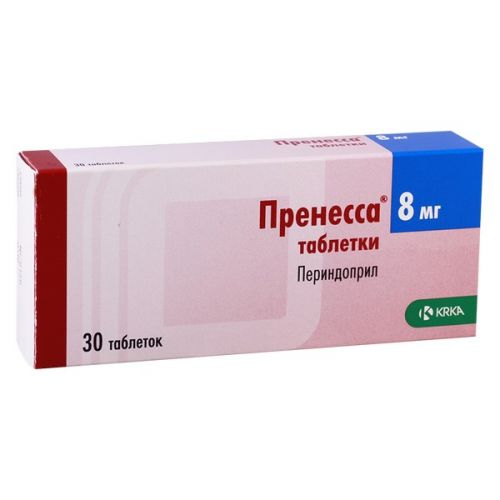
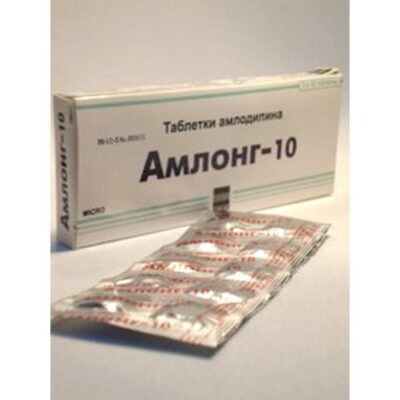
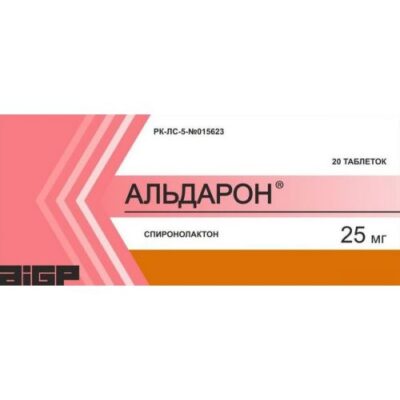
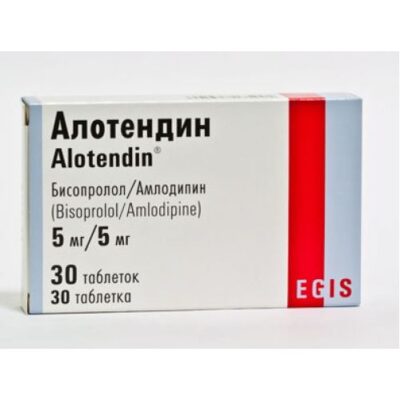
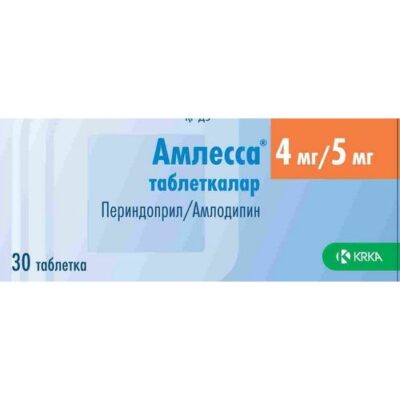

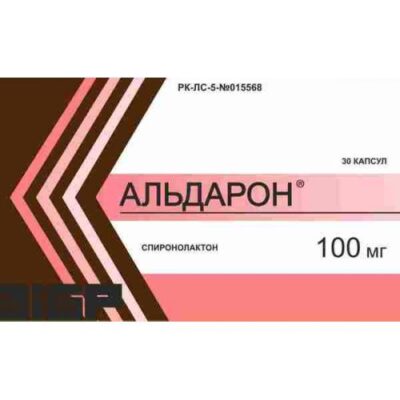
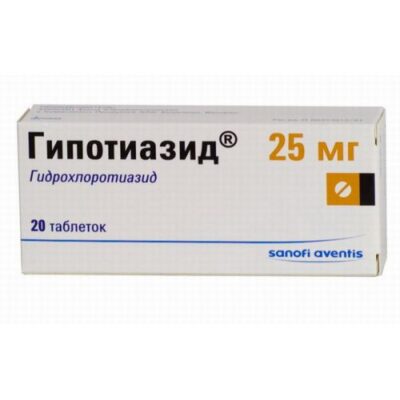
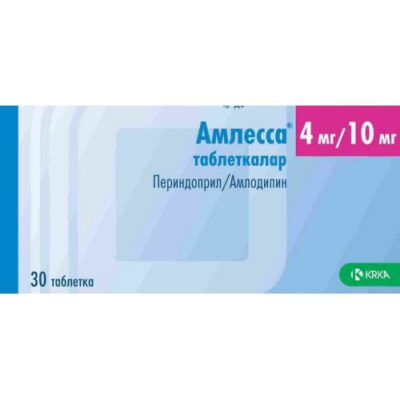
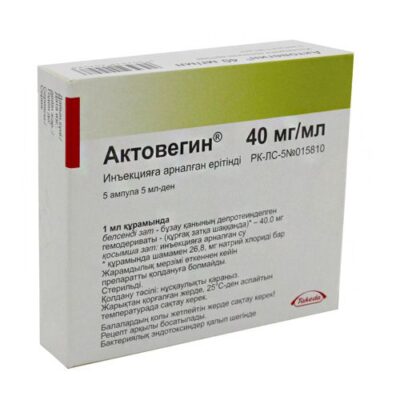
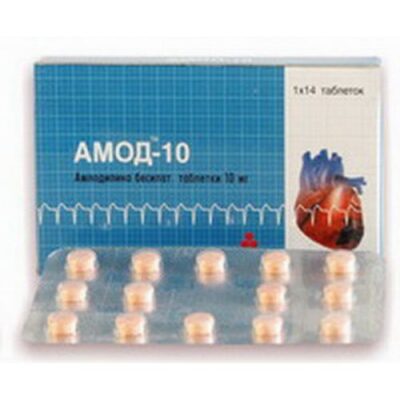






Reviews
There are no reviews yet.